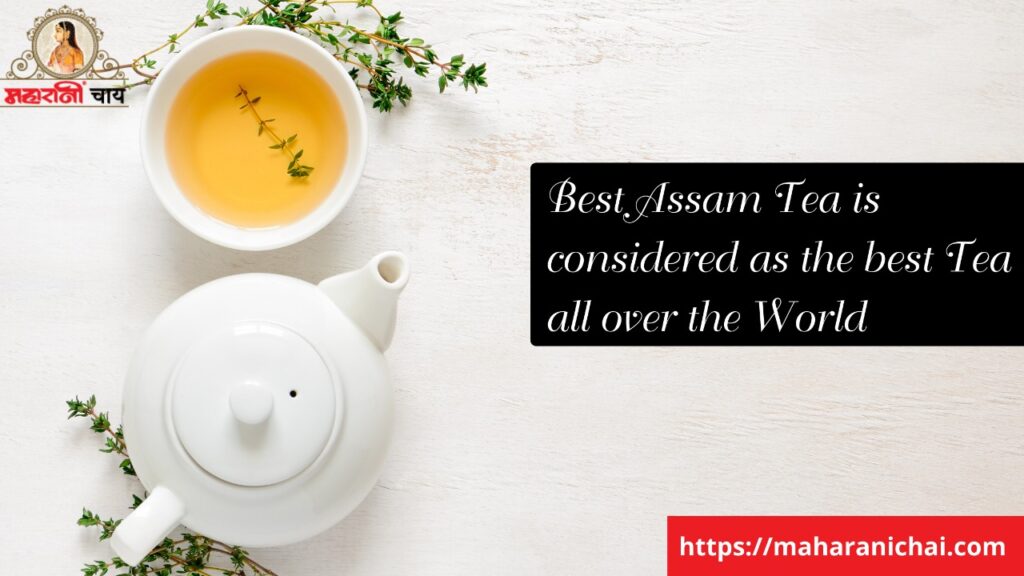Most likely, the Eastern Himalayan foothills are where your morning cup of chai originated. The state of Assam in India\’s north-east produces more than half of the country\’s total tea consumption. With its abundance of estates and gardens, visiting or even staying at a tea estate in Assam is a must.
However, it is thought that the region\’s plentiful rainfall, suitable temperatures, and humidity contribute to generating tea varieties that have a strong and distinctive flavour. Since the Assam region is thought to be the birthplace of Indian tea culture, which began on the Indian subcontinent centuries ago, every tea fan has a preferred Best Assam Tea in Uttarakhand. Assam is well-known for two things: first, its breath-taking natural beauty; and second, its extensive tea plantations.
Information about tea
The majority of the tea produced in Assam, which is the largest tea-producing region in India, is grown in the lowlands of the Brahmaputra Valley. Assam is mostly made up of flat tea gardens, with 2.3 million hectares of tea bushes, as opposed to the tea estates of Darjeeling or Munnar, where tea is produced on slopes. A tea factory in Assam produces about 570 million kilos of tea yearly, accounting for roughly 13 percent of the world\’s total consumption. Oolong and green tea are produced in extremely small amounts in Assam, where black tea production predominates. A significant portion of the top-quality single-origin tea produced by many estates is exported.
Assam\’s history with tea culture
According to historians, the first people to introduce tea culture to the Indian subcontinent were members of the Bodo tribe in India. Robert Bruce, a Scottish traveller, is thought to have made the first discovery of the tea culture among the Assamese tribesmen in the hills near Rangpur.
The Scottish explorers discovered that local tribes were using the leaves to make a fragrant beverage. He later gathered the samples and submitted them to specialists at the Botanical Garden in Calcutta, who identified the plant as a Chinese tea plant variation called Camellia sinensis. Since that time, Assam\’s tea sector has experienced tremendous growth.
Positive Weather Situation
Some of the world\’s finest teas are produced in Assam, and several of its tea varieties have won awards for their exceptional quality and distinctive flavours. However, it is thought that Assam\’s low altitude and the tropical climate in this region of the world contributed to the production of such distinctive tea quality.
Assamese people have a strong culture of tea.
One of the most intriguing things about Assam\’s tea gardens is that none of the people involved in the business observe Indian Standard Time (IST).
They choose to observe \”The Garden Time,\” also known as \”Bagantime\” locally, which is one hour earlier than standard Indian time.
Every Assamese tea company adopted the practise of keeping to their own schedule during the British era to speed up tea output. Assam is the only place in the world where tea plants are grown on plains; typically, tea plants are grown on mountain slopes.
\”Gem of India\”
The Indian government established the Tea Research Association in Jorhat, Assam, because Assam is the state that produces the most tea in the country and has the potential to become the sole producer of tea in the entire globe. The research institution made significant contributions to the creation and promotion of Assam tea.
Currently, Assam is home to 765 tea plantations that produce more than 570 million kg of Assam tea leaves annually, or almost 13% of the total amount of tea produced worldwide.
Choosing between Orthodox and CTC
The term Orthodox relates to the traditional hand-plucked harvesting and processing by artisan methods to make premium tea by nursing the leaf to balance the hundreds of molecular chemical compounds that give it flavour, texture, and aroma.
There are two basic Orthodox styles: whole leaf and broken leaf. They are termed \”grades\”, but that implies a clear good/bad distinction. That applies to some degree, rather like the Prime/Choice grading of beef. The quality of the cooked steak still depends on the chef.
There is no whole-leaf CTC. Technically, there are broken-leaf grades of CTC and dust may be the powder and particles left over from whole leaf processing, but in terms of characterising Assams, whole-broken and CTC-dust are precise.
Conclusion
The general advice on Assam teas comes with the caveat that you should only choose it if you enjoy strong teas. There are many deals to be found, and Assam estate teas are shockingly inexpensive; a cup of ChotaTingrai or Harmutty can be had for as little as 25 cents. BOPs cost around what premium tea bags cost.
And if you decide to buy the best assam tea online, make sure you go somewhere where you can receive quality rather than merely low pricing, whether you do it online or in a store. Visit us at https://maharanichai.com/ to buy the best assam tea online.

